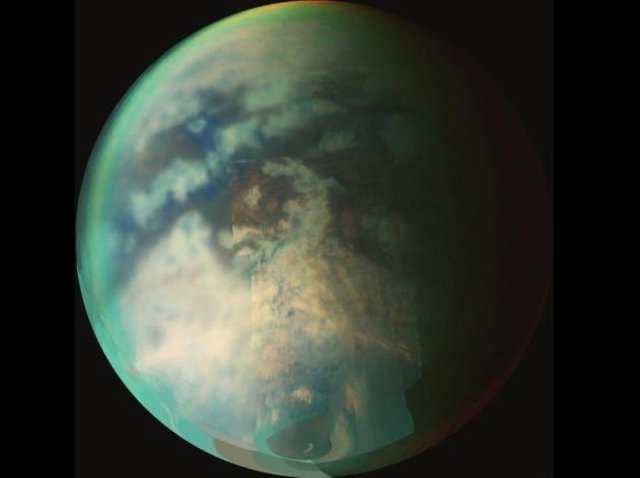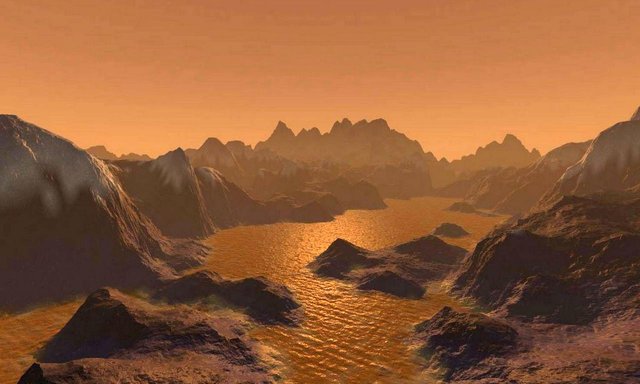Methane rivers and acetylene shores of Titan.
On the largest satellite of Saturn there may be unusual solids.
Saturn's satellite Titan is an amazing place in our solar system. It has a dense atmosphere consisting mainly of nitrogen, and rivers of liquid hydrocarbons: methane and ethane flow on its surface. Even in spite of –180 degrees Celsius, Titan would be a paradise for oil and gas industry workers, because valuable raw materials there are literally on the surface - get as much as you want. So it is quite possible that instead of romantic flights to Mars and searching for traces of past life on it, in the dystopian future we are in for gas production on Titan. However, so far, fortunately, only people of science are interested in Titan and exclusively for good purposes - to find out how this unique world works with hydrocarbons instead of water.

Researchers from the Jet Propulsion Laboratory of NASA and the Organization for Nuclear Science and Technology of Australia presented at the Astrobiological Conference in Seattle a report on the unusual "minerals" that may exist on Titan. They can explain the origin of the strange bright areas around the methane lakes observed from the Cassini probe. Today it is known that in the atmosphere of Titan various organic compounds are formed, for example, benzene and acetylene, which then together with hydrocarbon rains are deposited on the surface and fall into methane lakes. Since any lake, even consisting of methane or ethane, is completely alien to such a process as evaporation, it can be assumed that these bright areas are a kind of “sediment” formed after the volatilization of methane, by analogy with the drying of seawater when grains remain salt. But what could such a sediment be on Titan?
To answer this question, the researchers recreated low temperature conditions in a special cryostat, and then simulated the precipitation of acetylene and butane. Both of these substances are gases at room temperature, and at temperatures that can be on Titan, they will already be solid substances. What is the problem, you ask, it means that on the shores of methane lakes there is solid acetylene or butane. However, such substances even in the solid state are able to evaporate. Due to similar processes, on a frosty winter day, the snow that had fallen from the morning “disappears” in the evening. Therefore, the “sediment” from solid acetylene or butane on the lake on Titan would quickly disappear.
In fact, it turned out that acetylene and butane, when cooled, are capable of forming a so-called mixed crystal. Its peculiarity is that it is not just a mixture of two solid substances, as if you were mixing salt and sugar together, but two substances combined in a single crystal lattice. Such a general structure will be more stable than the substances separately. The authors of the work had previously found similar structures for a mixture of benzene with ethane and acetylene with ammonia, but a mixed crystal of acetylene with butane, as they believe, is the most likely candidate for explaining the bright halo around hydrocarbon lakes on Titan.

The surface of Titan through the eyes of the artist.